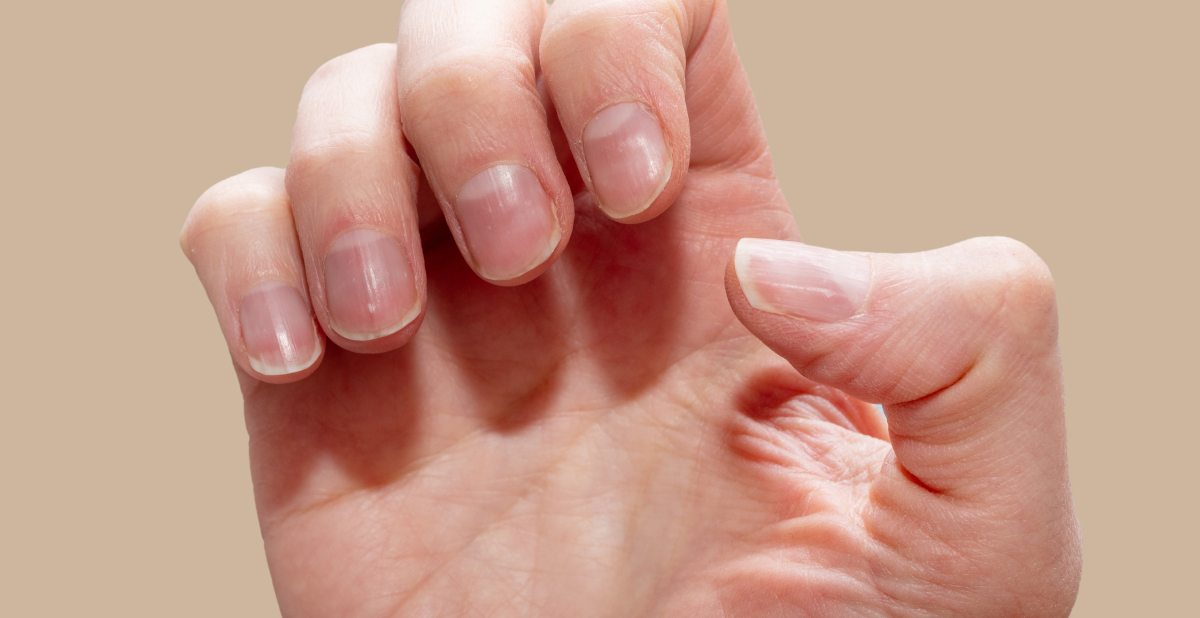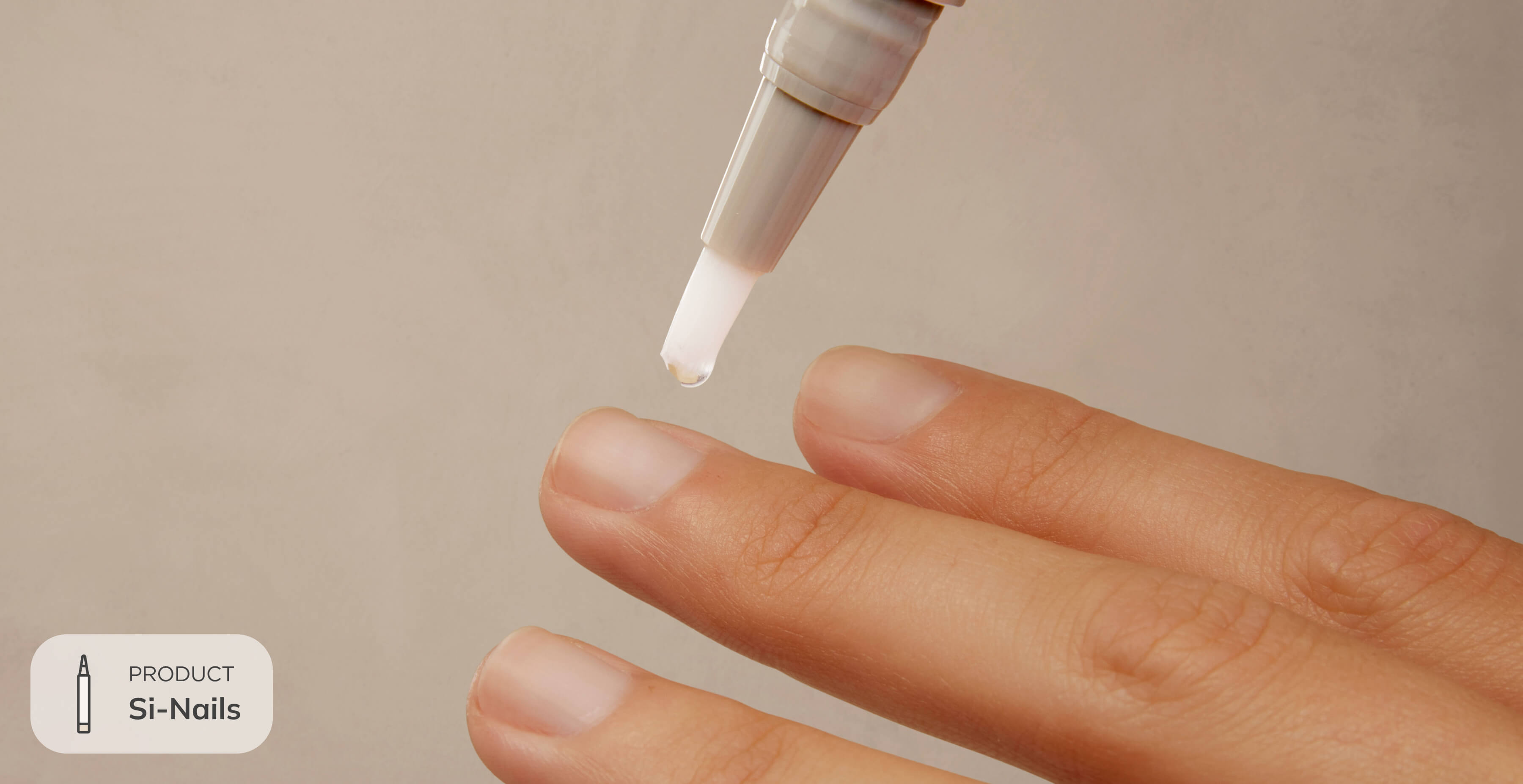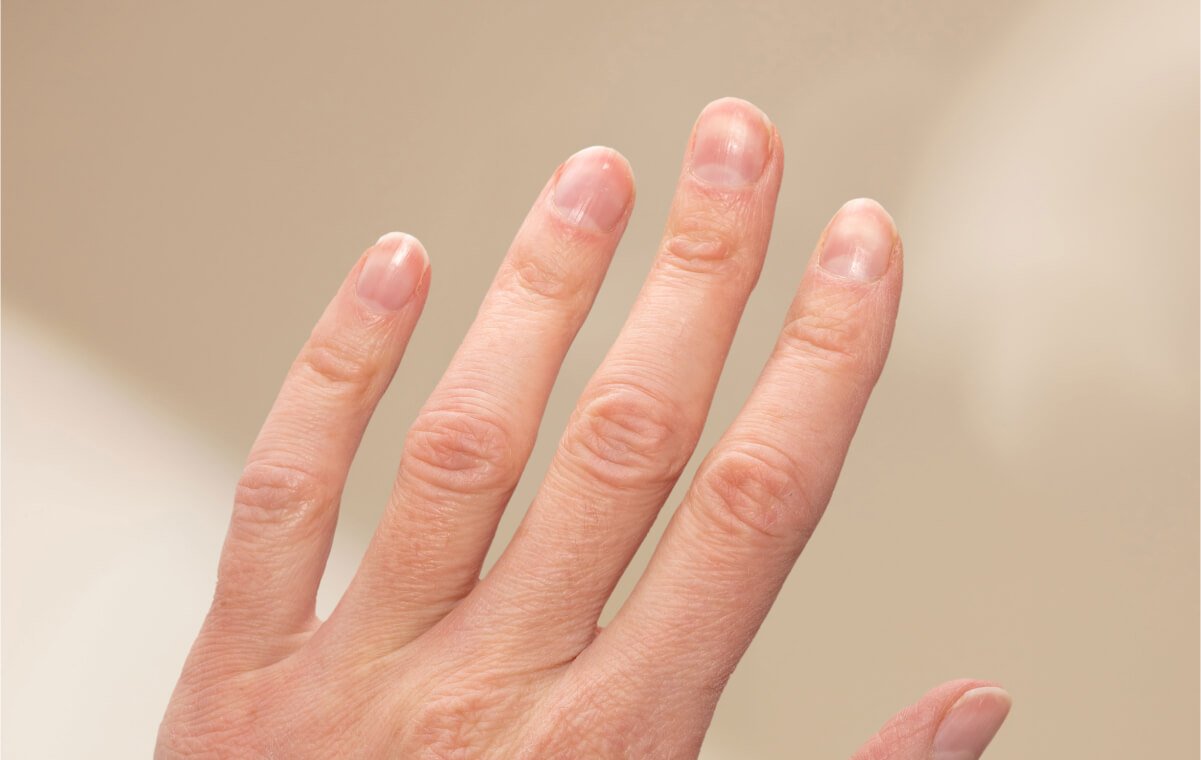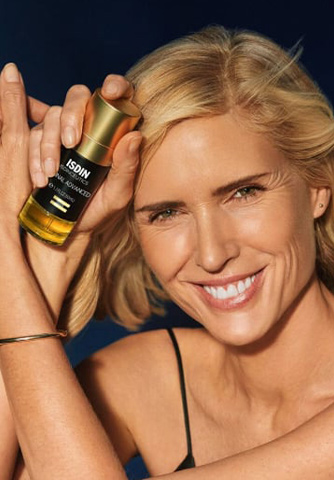You can tell a lot about someone by their nails.
Hobbies, personal style, and even a few clues about their lifestyle or work—it’s all at your fingertips. So, what do your nails say about you?
Let’s walk through how to check if your nails are healthy, answer some common questions, and share expert-backed tips to help you care for them.
Let’s get started!
Table of Contents
What’s in a (healthy) nail?
Nails are primarily made of a protein called keratin. Sound familiar? That’s because it’s also found in your hair and outermost layer of skin. This strong protein—combined with amino acids like cysteine—is what gives nails their natural hardness and resilience.
Our nails are made up of many different parts. Let’s briefly get to know each one and how they contribute to nail health:
- Nail plate: Tap the hard part of your nails. This plate contains the keratins that give your nails their strength.
- Lunula: Check out the small white half-moon near the base of your nail plate. This is a visible sign of growth, getting its color from cells that haven’t fully developed.
- Nail bed: The soft pink area under your nail plate, rich in blood vessels that give nails their healthy pink tone.
- Cuticle: Gently push on the edge of skin at the base of your nail. This thin layer of non-living skin seals the gap between your nail and finger, keeping out dirt and bacteria. Pro tip: don’t cut it!
- Eponychium: A protective layer of living skin around the nail (often mistaken for the cuticle).
- Nail matrix: Located beneath the cuticle at the base of your nail, this area is responsible for nail growth.
- Hyponychium: Touch the soft spot under the very tips of your nails. That’s the hyponychium—the soft tissue under the nail tip that helps guard against external irritants.
What do healthy nails look like?
Wondering what healthy nails should look like? Check for these easy-to-spot signs:

1. They’re pink, smooth, and free of grooves
Healthy nails typically look smooth and uniform. You shouldn’t see deep ridges, dents, or flaky layers. Minor white spots can come from bumps or scrapes, but they should grow out naturally over time.
2. They bend—but don’t break easily
Your nails are exposed to a lot! That’s why healthy nails are both flexible and durable. If yours split or break often, it could be a sign of dryness, nutritional deficiencies, or overexposure to water and chemicals.
3. Their texture stays consistent
You may notice your nails losing some of their strength as the years go by—and that’s completely normal. With age, nails naturally become more brittle. But if you notice a sudden change in texture, thickness, or color, and can’t pinpoint the cause (like an injury or polish removal), consider visiting your dermatologist.
4. They’re hydrated
Nails—like skin—need moisture. Dry nails or cuticles can lead to peeling or irritation, so it’s essential to moisturize regularly. Try a nourishing hand cream and a targeted nail treatment for best results.

Are yellow nails healthy?
If you wear nail polish frequently, you might have noticed some yellowing. That’s due to pigments in polish, not necessarily a health concern. A brief polish break can help restore your natural color.
However, if new nail growth starts out yellow, especially near the base, it could signal an infection or other issue. When in doubt, reach out to the expert: your dermatologist.
How to get healthy nails
If your nails seem weak, discolored, or prone to splitting, not to worry—they’re just asking for some extra TLC. Here’s how to get your nails back to a healthy state:
- Take a break from polish, gel, or acrylic treatments.
- Limit exposure to harsh cleaning chemicals and chlorinated water, as these can dry out your nails over time.
- Use a hydrating and strengthening nail serum consistently.
What ingredients should I look for in nail strengtheners?
Choose a formula rich in strengthening, nourishing, and hydrating ingredients. Here are a few to put at the top of your list:
Pistacia lentiscus: Remember what we mentioned about keratins? They’re an important building block for strong, resistant nails. Also known as gum from the Mediterranean-native Mastic tree, this ingredient helps support keratin and improve nail structure.
Silanediol salicylate: This innovative ingredient promotes silicon, a crucial mineral that makes up healthy nails.
Cationic hyaluronic acid: An enhanced version of one of the most well-known moisturizers in the world, this next-gen hydrator clings to nails up to 17 times better than regular hyaluronic acid.

Expert tip: As shared with Byrdie, board-certified dermatologist Dr. Diane Madfes, MD, recommends using ISDIN Si-Nails on bare nails daily. The pen-style applicator makes it simple—just one click per nail.
Healthy, happy, beautiful
Caring for your nails is more than just appearance—it’s a form of self-care. Put yourself first by building in little moments throughout the day. At your desk, on the phone, before bed—make sure your nail care routine works for both your schedule and your goals.
Because healthy nails aren’t just beautiful, they’re a reflection of how you care for yourself.
Sources and references:
https://www.nhs.uk/conditions/nail-problems/
https://www.mayoclinic.org/healthy-lifestyle/adult-health/in-depth/nails/art-20044954
*Data on File; ISDIN Corp.; Morristown, NJ; 2022.
Behind the blog:
Article written and reviewed by:
Our namesake embodies the spirit of embracing life and all its wonder. As wellness journalists, we explore topics that invigorate the senses and keep curiosity alive. We believe that glowing skin is the result of a healthy body and mind. Weaving beauty with science, we aim to inspire you to live young at every age.



